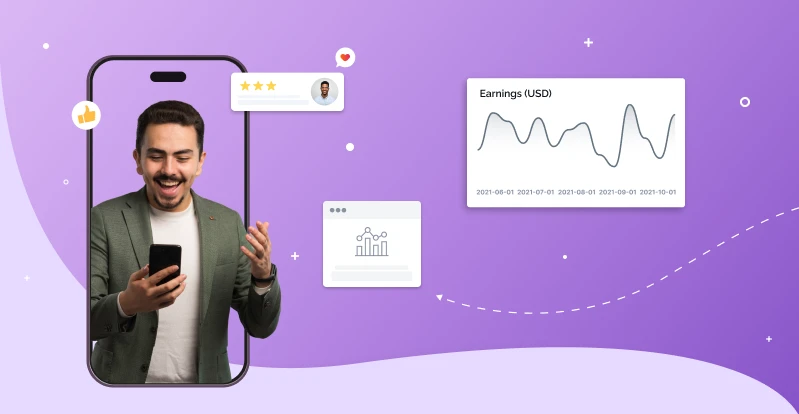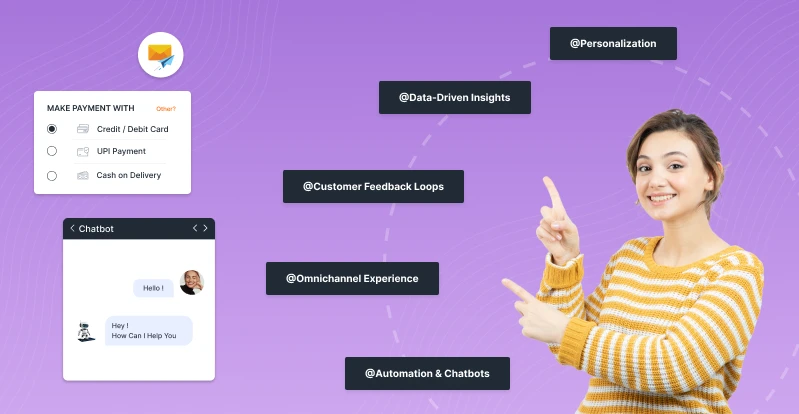How to Map and Optimize Your Customer Journey in 5 Steps

Visualize a spick-and-span store you are about to enter. You find every little thing in perfect order. Sales executives greet you by your correct name, tell you how exactly to find what you need, and recommend products that fit your purchases. They make checkout quick and easy and say “Goodbye, Sir/Ma’am”, knowing you’ll be back.
Now, speaking of an optimized customer journey, this is exactly how it shall be! Being a trusted eCommerce development company,we can say that every eCommerce business needs a smooth or frictionless customer journey to avoid losing customers to competitors.
It captures interactions from its earliest discovery until post-purchase retention. It shows the clear steps of the potential buyers’ journey with the brand. This is how a proactive customer journey map drives traffic, orders, and sales.
What Is a Customer Journey Map?
It is a brainstormed and strategic presentation to visualize every touchpoint provided for customers to engage with a brand’s eCommerce app. the customer journey defines what the customer does, how they feel, and what is expected from them, starting from awareness to post-purchase suggestions.
For eCommerce, analyzing and optimizing this journey of the customer makes it possible to ensure a frictionless experience for the shopper, thus leading to higher conversions, satisfied customers, and thereby, a lasting loyalty to the brand.
Key Features of a Well-Optimized Customer Journey
An effective customer journey mapping process includes the following essential features:
Omnichannel Experience
Customers may communicate with various brands via websites, mobile apps, social media, email, and even offline stores. Omnichannel customer experience breaks the barrier of different channels and offers a seamless and frictionless experience to continue their shopping journey. It means if a customer has left at any touchpoint on one channel, the journey to make an order can begin from another channel.
Personalization & AI-driven Recommendations
Smart and personalized recommendation engines can help eCommerce businesses know about a customer’s behavior on their eCommerce website, web app, or mobile app. AI & ML technologies will use the real-time data and show preferred results to that customer. This boosts conversions.
Data-Driven Insights
Analytics tools help track customer data to create customer personas and make recommendations that drive the customer to order. The sales and marketing teams can learn this innovative way of better knowing their potential leads. They can offer personalized offers and recommendations to convert them into their customers.

Automation & Chatbots
AI bots or chatbots automate customer support operations. They instantly respond to customers’ general and specific queries with precision. They can also help customers with various steps needed to make a purchase. As a top digital commerce company, we have seen brilliant results with AI-driven customer support automation.
Customer Feedback Loops
Timely and routine analysis of customer feedback is quite essential for businesses to grow. Feedback is actually room for improvement as it will help us to fine-tune touchpoints to meet customer expectations and make them feel valued.
Benefits of Mapping & Optimizing the Customer Journey
For Businesses:
- Higher conversion rates: Reduces friction and increases sales.
- Improved customer retention: Happy customers become regular customers.
- Better marketing efficiency: Data-driven and targeted marketing campaigns reduce ad spend.
- Enhanced brand reputation: Win more customers by impressive overall performance that will boost brand value.
For Customers:
- Seamless experience: Customers can navigate effortlessly without unnecessary hurdles.
- Personalized interactions: Tailored offers and communications create a more engaging experience.
- Faster resolutions: AI-driven automation and support systems reduce wait times.
- Increased trust: Transparent and customer-centric interactions foster long-term loyalty.
Five Key Steps to Map and Enhance Your Customer Journey
1. Define Customer Personas
It is important to understand the people who are mapped through the journey before creating the journey map. The fictional representation of ideal customers for your business is a customer persona based upon the real data of customers.
- Identify key demographics: age, gender, location, and income.
- Understand their interests, behaviors, and purchasing motivations.
- Pinpoint pain points and common objections that prevent them from making a purchase.
How to create customer personas?
- Use Google Analytics, CRM systems, and customer survey data for customer segmentation.
- Analyze their interests and behaviors through social media analytics.
- Try to gather direct feedback by taking interviews.
With detailed customer personas built, you can easily customize your messaging and website experience as well as marketing strategies.
2. Map All Customer Touchpoints
Customers interact with your brand across multiple stages. Mapping these touchpoints helps identify strengths and weaknesses in their journey.
Key stages in the customer journey:
- Awareness: The customer discovers your brand via search engines, ads, social media, or word-of-mouth.
- Consideration: They explore your website, read reviews, compare products, and engage with content.
- Decision: They proceed to checkout, influenced by pricing, trust signals, and ease of purchase.
- Retention: After purchase, post-sales engagement (emails, loyalty programs) determines whether they return.
- Advocacy: Satisfied customers become brand ambassadors, leaving positive reviews and referrals.
Tools to map touchpoints:
- Use platforms like Miro, Lucidchart, or HubSpot to create a visual journey map.
- Monitor customer interactions through heatmaps, session recordings, and funnel tracking tools.
3. Identify Pain Points & Gaps
Now that you have mapped the journey, it’s time to identify roadblocks that hinder conversions.
Common pain points:
- Slow-loading website or complicated navigation.
- Confusing checkout process leading to cart abandonment.
- Lack of product information or unclear return policies.
- Poor mobile experience or unresponsive design.
How to identify pain points:
- Use heatmaps (Hotjar, Crazy Egg) to see where users drop off.
- Analyze session recordings to observe browsing behavior.
- Conduct customer surveys and analyze feedback.
Addressing these issues improves the overall experience, increasing customer satisfaction and conversion rates.
4. Personalize & Optimize the Experience
Modern customers expect brands to offer experiences that meet their demands or desires. Now, not all customers will be the same. This is where customer personalization becomes important. It delivers a different yet unique experience that satisfies the customer and boosts sales.
Ways to personalize & optimize:
- Tailored and personalized recommendations based on user behavior on the platform.
- Email automation with automated follow-ups and cart reminders for cart abandonment scenarios.
- Enhance UX/UI to boost user-friendly navigation on the eCommerce platform.
- Offer personalized deals and discounts to win repeated customers.
- Add multiple payment options and one-click checkout.
Do all the possible things that make your customers feel valued.

5. Continuously Monitor, Test & Improve
Customer behaviors evolve, and so should your journey map. Constantly tracking and optimizing ensures long-term success.
Key metrics to monitor:
- Conversion rate – Are visitors converting into buyers?
- Bounce rate – Are users leaving too soon?
- Net Promoter Score (NPS) – Are customers satisfied enough to recommend your brand?
- Retention rate – Are customers coming back for repeat purchases?
How to optimize effectively:
- Conduct A/B testing on landing pages, CTAs, and checkout processes.
- Regularly update customer journey maps based on new trends and data insights.
- Use customer feedback loops to gain insights and improve touchpoints.
Optimizing the journey is an ongoing process that requires continuous improvement based on real-time data.
Conclusion
Are you listening? Every click, every scroll, every hesitation is a whisper of what they need. The thriving brands aren’t just selling products. They’re orchestrating experiences that resonate, anticipate, and delight.
An established customer journey, well addressed and optimized, has become the foundation of a successful eCommerce brand. Thus, seamless interactions could build conversions and loyalty by creating an understanding of the customer persona, mapping the touchpoints, identifying pain points, personalizing experiences, and inheriting the improvement cycle.




